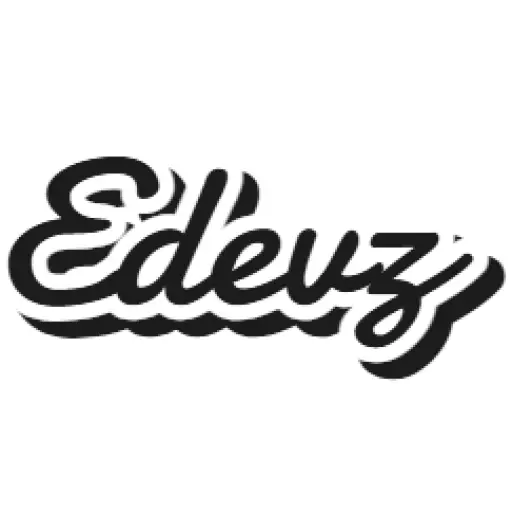
Are you ready to future-proof your coding career? 🚀 As we approach 2025, the programming landscape is evolving at breakneck speed. With new technologies emerging and industry demands shifting, it’s crucial to stay ahead of the curve. But with countless languages out there, how do you know which ones are worth your time and effort?
Fear not, aspiring coders and seasoned developers alike! We’ve done the research and compiled a list of the top 5 programming languages that are set to dominate the tech world in 2025. From versatile all-rounders to specialized powerhouses, these languages will not only boost your employability but also open doors to exciting new opportunities in AI, mobile development, and beyond.
In this blog post, we’ll dive deep into each of these game-changing languages: Python’s versatility, Rust’s unparalleled performance, Kotlin’s Android prowess, TypeScript’s JavaScript enhancement, and Go’s concurrent programming capabilities. Get ready to supercharge your coding skills and position yourself at the forefront of the programming revolution! 💻✨
Â
Python: The Versatile Powerhouse

A. Machine Learning and AI applications
Python’s extensive libraries and frameworks make it a top choice for machine learning and AI projects. Key libraries include:
Â
-
- TensorFlow: Google’s open-source ML framework
-
- PyTorch: Facebook’s deep learning platform
-
- Scikit-learn: Machine learning for data mining and analysis
-
- Keras: High-level neural networks API
These tools enable developers to create sophisticated AI models with ease.
B. Web development with Django and Flask
Python excels in web development through powerful frameworks:
| Framework | Best for | Key Features |
|---|---|---|
| Django | Large, complex projects | Built-in admin panel, ORM |
| Flask | Lightweight applications | Minimalist, highly customizable |
Both frameworks offer rapid development cycles and robust security features.
C. Data analysis and visualization capabilities
Python’s data-centric libraries revolutionize data analysis:
Â
-
- Pandas: Data manipulation and analysis
-
- NumPy: Numerical computing
-
- Matplotlib and Seaborn: Data visualization
These tools allow data scientists to process, analyze, and visualize large datasets efficiently.
D. Strong community support and resources
Python’s vibrant ecosystem includes:
Â
-
- Extensive documentation
-
- Active online forums (Stack Overflow, Reddit)
-
- Regular conferences (PyCon)
-
- Countless tutorials and courses
This support network ensures that developers can find solutions quickly and stay updated with the latest trends in Python programming.
With its versatility across multiple domains, Python continues to be a top choice for developers in 2025 and beyond.
Â
Rust: The Performance Champion

A. Memory safety without sacrificing speed
Rust’s innovative approach to memory management sets it apart from other programming languages. By enforcing strict ownership rules and borrowing concepts, Rust eliminates common memory-related bugs like null or dangling pointer references, buffer overflows, and data races. This approach ensures memory safety without relying on a garbage collector, resulting in exceptional performance.
| Feature | Benefit |
|---|---|
| Ownership model | Prevents memory leaks and data races |
| Zero-cost abstractions | High-level features with low-level performance |
| Compile-time checks | Catches errors early in development |
B. Growing ecosystem for systems programming
Rust’s ecosystem has been expanding rapidly, making it an increasingly attractive choice for systems programming. The language’s package manager, Cargo, simplifies dependency management and project builds.
Â
-
- Operating systems development (e.g., Redox OS)
-
- Embedded systems and IoT devices
-
- Network programming and server applications
-
- Game engine development
C. Potential in WebAssembly development
Rust’s compatibility with WebAssembly (Wasm) opens up new possibilities for web development. By compiling Rust code to Wasm, developers can create high-performance web applications that run natively in the browser.
D. Increasing adoption in big tech companies
Major tech companies are recognizing Rust’s potential and integrating it into their projects:
Â
-
- Microsoft: Exploring Rust for system components
-
- Amazon: Using Rust in AWS services
-
- Mozilla: Developing core browser components
-
- Dropbox: Rewriting performance-critical services
As Rust continues to gain traction in the industry, its future looks promising for developers seeking a powerful, safe, and efficient programming language.
Â
Kotlin: The Android and Beyond Language

A. Official language for Android development
Kotlin has become the go-to language for Android app development, officially endorsed by Google. This shift has revolutionized the Android development landscape, offering developers a more modern and efficient alternative to Java.
Â
-
- Benefits of Kotlin for Android development:
Â
-
- Null safety
-
- Extension functions
-
- Data classes
-
- Coroutines for asynchronous programming
-
- Benefits of Kotlin for Android development:
B. Interoperability with Java
One of Kotlin’s strongest features is its seamless interoperability with Java. This allows developers to:
Â
-
- Gradually migrate existing Java projects to Kotlin
-
- Use Java libraries in Kotlin projects
-
- Mix Kotlin and Java code within the same project
| Feature | Java | Kotlin |
|---|---|---|
| Null safety | Not built-in | Built-in |
| Extension functions | Not available | Available |
| Data classes | Verbose | Concise |
C. Server-side development capabilities
While Kotlin shines in Android development, it’s also gaining traction in server-side programming:
Â
-
- Frameworks like Spring Boot support Kotlin
-
- Ktor, a Kotlin-native framework, is growing in popularity
-
- Kotlin/JS allows for full-stack development
D. Concise and expressive syntax
Kotlin’s syntax is designed to be more readable and expressive than Java:
Â
-
- Type inference reduces boilerplate code
-
- Lambda expressions simplify functional programming
-
- Smart casts eliminate redundant type checks
These features contribute to faster development cycles and fewer bugs, making Kotlin an attractive choice for both mobile and server-side development in 2025 and beyond.
Â
TypeScript: The JavaScript Enhancer

A. Static typing for improved code quality
TypeScript’s static typing system offers significant advantages for developers:
Â
-
- Catches errors early in development
-
- Improves code readability and self-documentation
-
- Enhances code completion and refactoring
Here’s a comparison of JavaScript and TypeScript code:
| Feature | JavaScript | TypeScript |
|---|---|---|
| Type checking | Runtime | Compile-time |
| Variable declaration | let x = 5; |
let x: number = 5; |
| Function parameters | function add(a, b) { ... } |
function add(a: number, b: number): number { ... } |
B. Better tooling and IDE support
TypeScript’s static typing enables superior development tools:
Â
-
- Intelligent code completion
-
- Accurate refactoring
-
- Enhanced debugging experience
-
- Improved code navigation
C. Compatibility with existing JavaScript projects
TypeScript seamlessly integrates with JavaScript:
Â
-
- Gradual adoption possible
-
- Can use existing JavaScript libraries
-
- TypeScript compiles to clean JavaScript code
D. Enhanced maintainability for large codebases
For large-scale applications, TypeScript offers:
Â
-
- Clearer code structure
-
- Easier to understand and maintain
-
- Reduced likelihood of runtime errors
Now that we’ve explored TypeScript’s strengths, let’s move on to our final language, which excels in concurrent programming.
Â
Go: The Concurrent Programming Solution

A. Efficient handling of concurrent operations
Go’s goroutines and channels make it a powerhouse for concurrent programming. Goroutines are lightweight threads that allow developers to run multiple functions concurrently with minimal overhead. Channels, on the other hand, provide a safe way for goroutines to communicate and synchronize their actions.
| Feature | Description |
|---|---|
| Goroutines | Lightweight, concurrent functions |
| Channels | Safe communication between goroutines |
B. Fast compilation and execution
Go’s compilation speed is impressive, often completing in seconds. This quick turnaround time enhances developer productivity and streamlines the development process. Additionally, Go’s runtime performance is notable, making it suitable for resource-intensive applications.
C. Simplicity and ease of learning
Go’s syntax is clean and straightforward, making it accessible to beginners while still powerful enough for experienced developers. Key features that contribute to its simplicity include:
Â
-
- Minimal keywords
-
- Built-in concurrency primitives
-
- Automatic memory management
D. Growing popularity in cloud and network services
Go has gained significant traction in cloud computing and network services due to its efficiency and scalability. Major companies using Go include:
Â
-
- Uber
-
- Dropbox
-
- Netflix
E. Built-in testing and profiling tools
Go comes with a robust standard library that includes testing and profiling tools. These built-in features enable developers to:
Â
-
- Write and run unit tests easily
-
- Benchmark code performance
-
- Identify and resolve bottlenecks
With its focus on simplicity and performance, Go is well-positioned to become a leading language for concurrent and distributed systems in the coming years.

As we look ahead to 2025, the programming landscape continues to evolve rapidly. Python remains a versatile powerhouse, ideal for beginners and seasoned developers alike. Rust offers unparalleled performance and safety, making it a top choice for systems programming. Kotlin’s flexibility extends beyond Android development, while TypeScript enhances JavaScript with robust typing. Go’s simplicity and built-in concurrency support make it a standout for modern, scalable applications.
Choosing the right programming language to learn is a crucial step in your development journey. Consider your career goals, industry trends, and personal interests when making your decision. Whichever language you choose, remember that continuous learning and adaptability are key to staying relevant in the ever-changing world of technology. Start exploring these languages today to position yourself for success in the programming landscape of 2025 and beyond.
